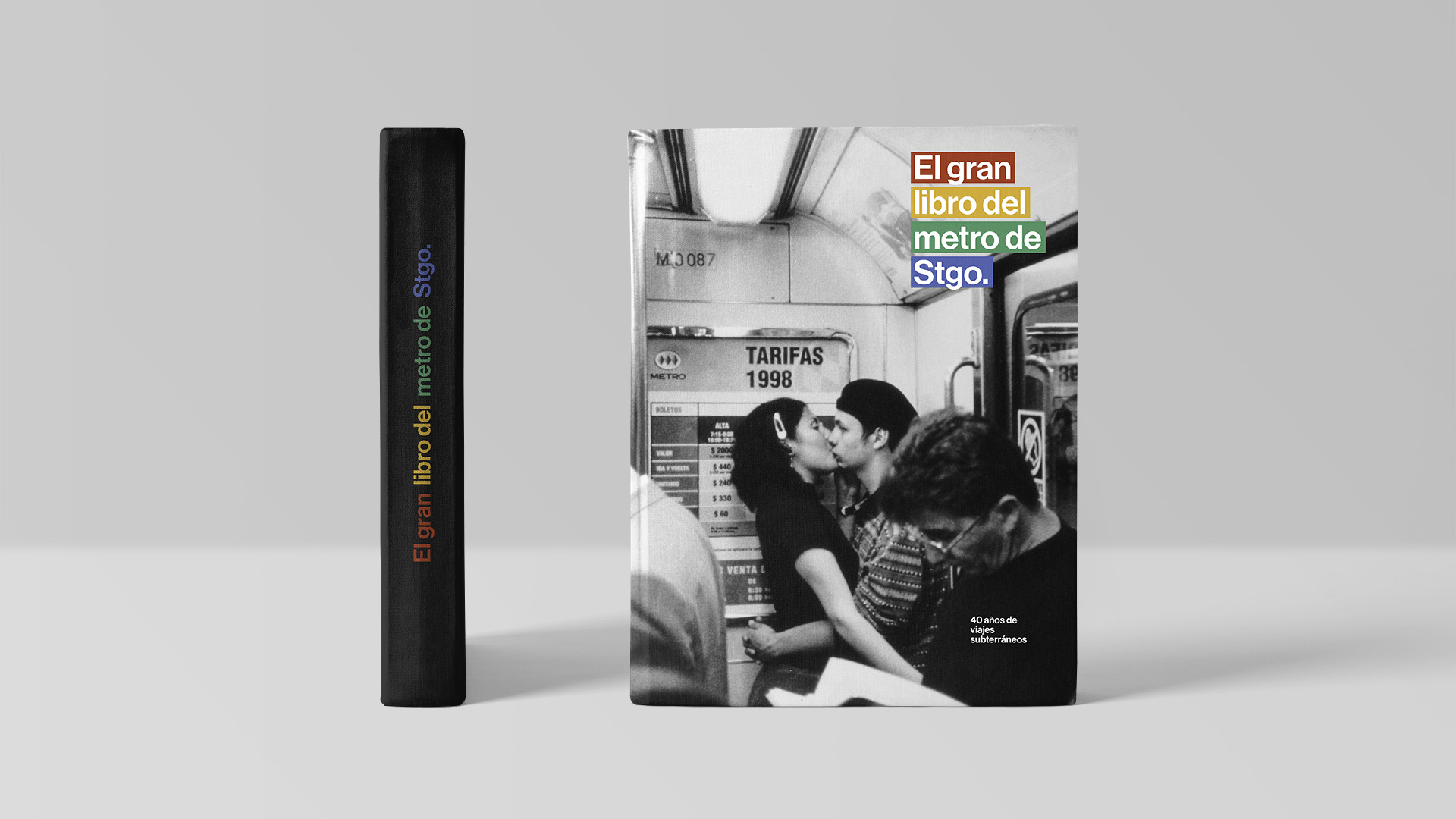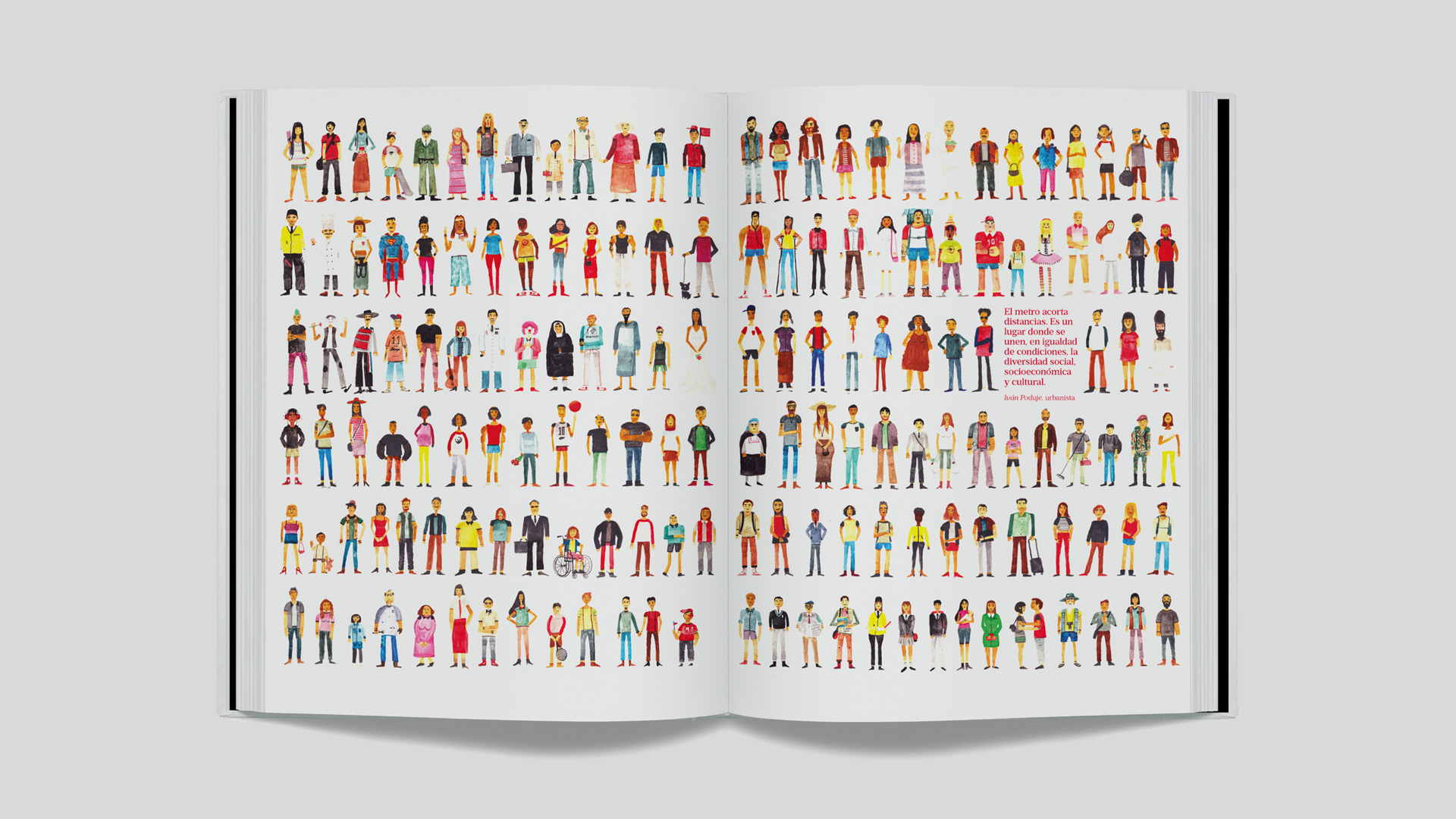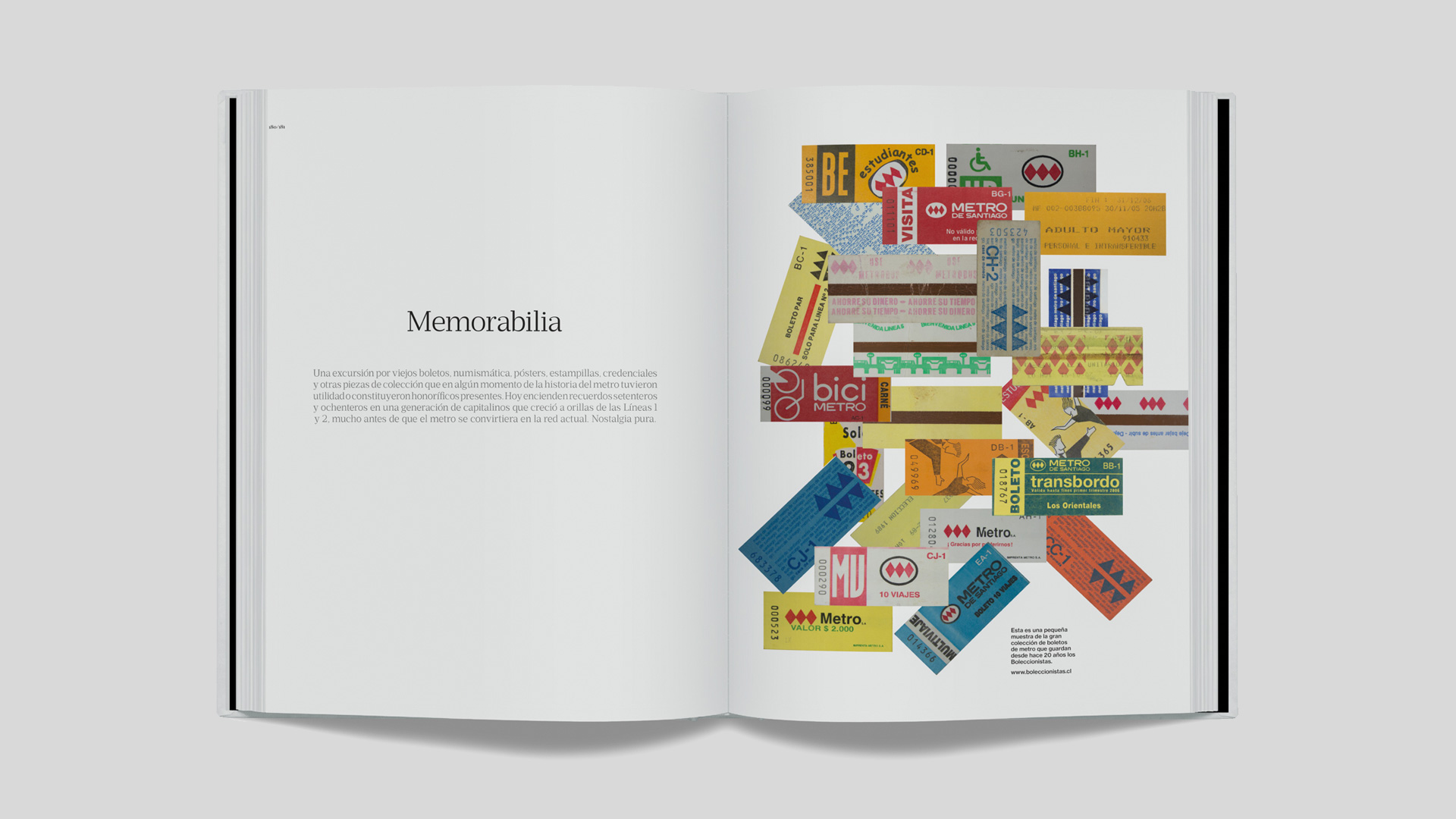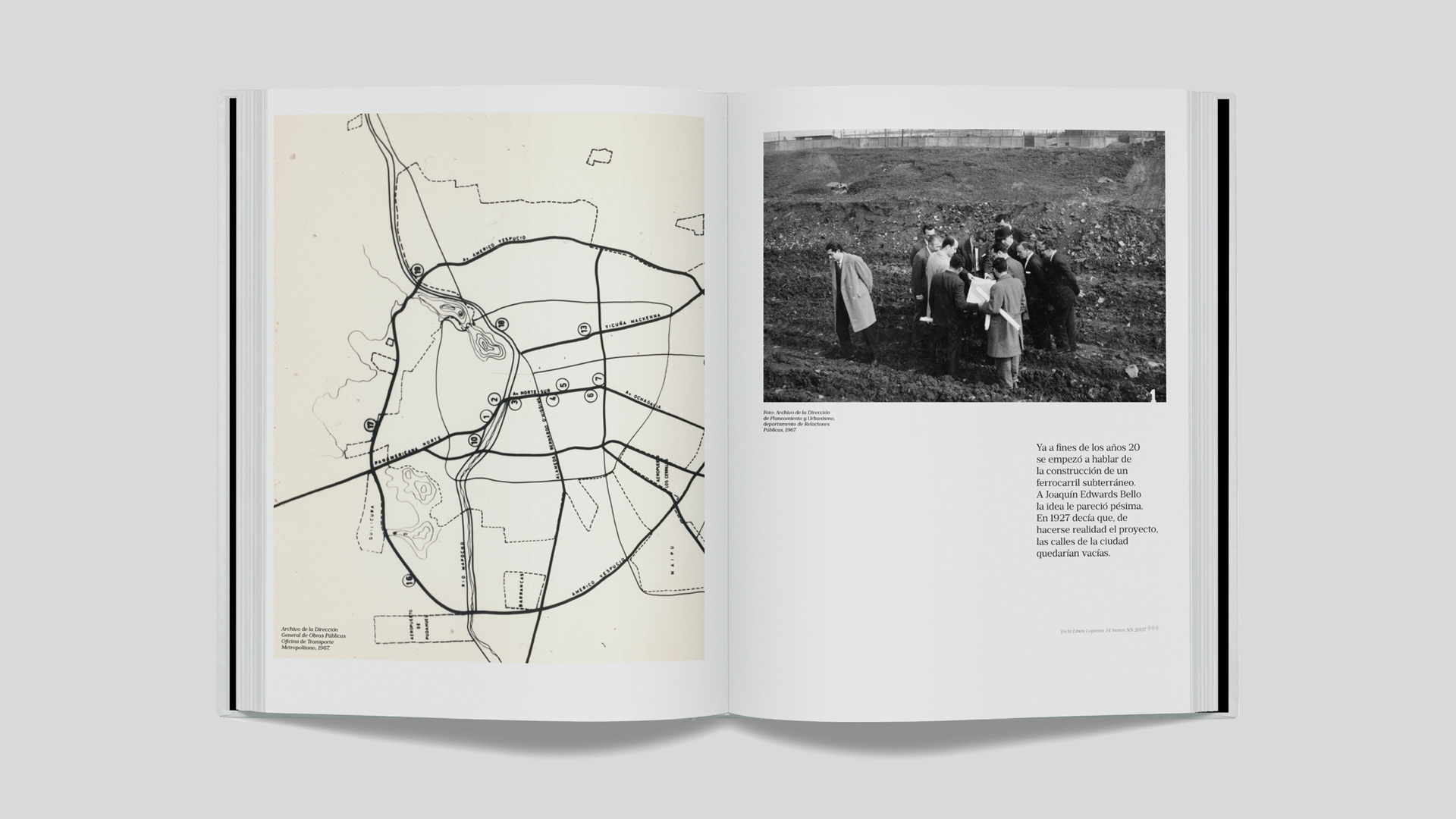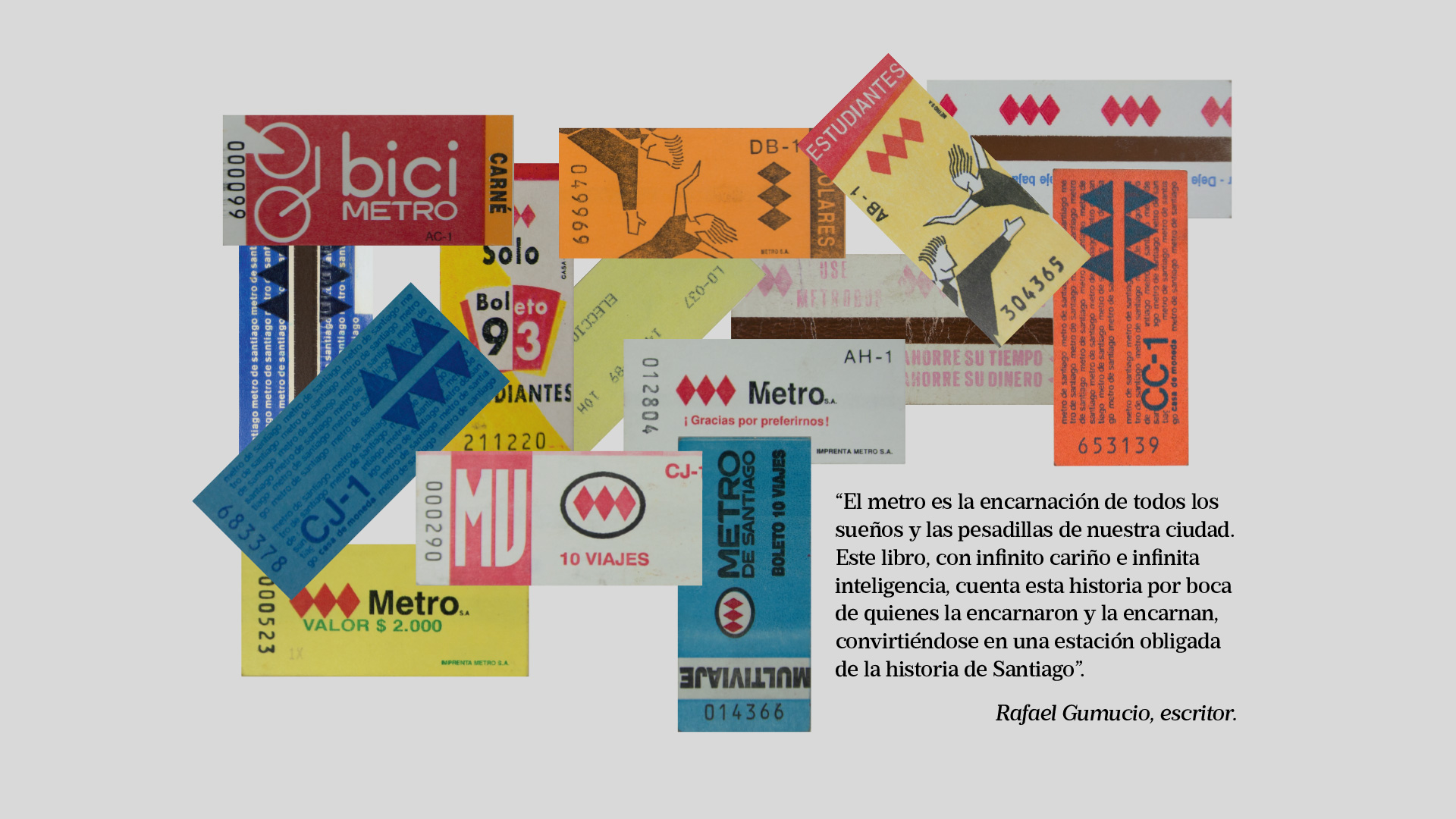El gran libro del Metro De Santiago
Client
Metro de Santiago
Services
Art Direction
Book Design
Content Direction
Creative Direction
Narrative and voice
Year
2015
Team
Piedad Rivadeneira
Magdalena Rivadeneira
Consuelo Kehr
Adriano García
Renata Tesser
Daniel Gonzalez
Alejandra Amenábar
If you commute daily through your local underground, chances are you will agree with us – a subway holds a lot of stories. And the metro of Santiago isn’t any different.
To celebrate its fortieth anniversary, Metro de Santiago launched a call to recover its four decades of history through an editorial work that highlights its contribution to the development of the city and the quality of life of its inhabitants. As you might have already understood, we won that call.
Developed jointly by Agencia Felicidad and Memoria Creativa, this unprecedented tribute book shares the love of Chileans for the Metro. It is a journey through time in which journalists, designers, illustrators and photographers recount the epic saga of la columna vertebral de Santiago. But, of all those stories, anecdotes, stats and figures, what should the book focus on? How could we craft a story of Santiago through its iconic transportation system? Could we expand the meaning of a book by getting rid of the classical linear perspective?
With over forty years of history and two hundred blank pages, we had to look for stories everywhere. We had to identify the narrative keystones that would hold its history together – from the engineers and workers to the millions of passengers who travel daily. This could not end up being a corporate book: we had to find a way to bypass the institutional tone and bring the historical reconstruction closer to the edge of everyday life, infusing the book with a profound sense of humanity: the book had to show people, but also a period of Chilean society that spans almost two complete generations. We had to set the foundations. Our challenge was to find a perfect balance between the past and the future, between the technical and the emotional, between collective memory and the miscellaneous personal anecdote.
The editorial concept of the book thus suggested a flexible relationship between the pages and the contents, where distances, heights and proportions didn’t act as a straitjacket, but were at the service of the narrative. A train goes ahead sequentially, from A to Z, from one station to another. Ironically, the history of a metro couldn’t be told that way. That of the Metro is a fragmented and open tale, an accumulation of individual experiences held in the collective memory of the billions of passengers who have occupied it since 1975. Abandoning the traditional chronological perspective, we organized the content following a circular logic, offering reading access to any page, from all sections: the reader could thus move from one chapter to another –from one station to another– in a dynamic and discontinuous way, returning to pick up the book as many times as necessary until completing its nonlinear journey.
It was time to capture this plurality in everything else – content, design, and production. On a graphic level, we developed a proposal with a magazine-like approach: many elements, useful hierarchies, a diversity of languages and codes. The infographics and illustrations were a crucial aspect. The book should be as crowded and diverse as the Metro: this is why we commissioned a plethora of external artists, illustrators, and designers to disseminate their particular style, aesthetics, and views across the pages of the book.
As to the materials of the tome, our first impulse was to think of textures and weights that would make it as imperishable, bold, and eternal as the Metro itself. However, as the materials had to be in harmony with the public nature of the work, we chose a flexicover, whose lightweight density combines durability and flexibility with volume and democratic printing costs– and a humble and opaque paper for the inside. Aren’t finishings, weights, and tactile features just another narrative tool, after all?
In El Gran libro del Metro de Santiago there is not a single story, not a single voice, and it is the reader who determines the meaning by contrasting those fragments of memories with their own experience: the history of the institution laid into a story everybody can tell.
